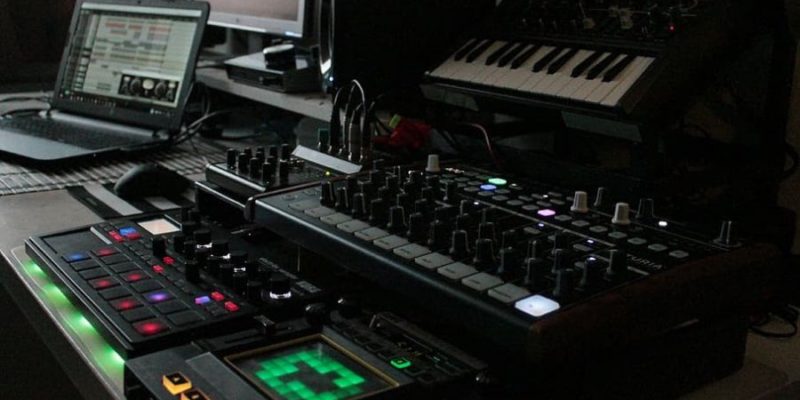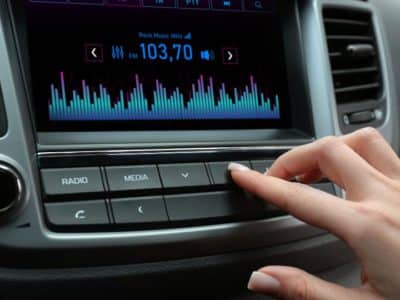Mixing is the most crucial part of creating your music to a whole new level. You might have a bad recording, but you can turn it into a beautiful one with proper mix by following few mixing tips.
Mixing music requires technical knowledge about audio signal flow, using DAW (Digital Audio Workstation) software and signal processors. At the same time, artistic ability and creativity will determine what tool to use when and where.
In this article, I have compiled a list of the best mixing tips to come up with a great audio mix. These techniques work for almost any commercial music genre: pop, rap, rock, electronica, orchestra, country, and so on. So, let’s start with our mixing tips list.
Table of Contents
1. Start By Arranging All Your Tracks In Order
You may need to mix ten to twenty or more audio tracks into a single piece of music. I like to arrange them in the serial number. Start with the rhythm first. Drums and percussions will maintain the rhythm throughout the music.
So, I place percussion at the top slot. It follows with bass, acoustic and electric guitar, piano, vocals, and harmony, etc. This order will help you to memorize which tracks you have worked on and which ones need modification. Otherwise, you will end up scrolling up and down to find your guitar solo or flute melody.
2. Take Advantage Of Busses & Subgroups
Mixing with a single stereo bus may cause instruments like the lead vocals and drums to affect overall mix bus processing undesirably. One stereo mix bus may be enough for a simple session with an acoustic guitar and a vocal instrument, containing a few audio and effect tracks.
But complex music composition with countless drums, keyboard, guitar, flute, vocal, and different effect tracks need multiple subgroup busses with some processing before adding them to the stereo mix bus. Subgroups allow you to simplify your mix by controlling the volume and EQ of many tracks with one fader.
3. Push The Master Fader +1 DB At The Chorus
Chorus is the busiest part of a song. It is also the most complex part to mix. Loop that part and listen to it carefully.
Raise the overall volume by +1dB at the chorus. This will add an extra impact to the listener in the most exciting part of the song.
4. Get A Balanced Static Mix
The static mix is the foundation of your music mixing session. No plugins and automation are required. Just use the fader volume and pan pots to create the best mix. Set all volumes at a level where you can hear every track.
But not every track is equally important at the same time. So, if a specific guitar solo needs to dominate a particular section of the music, raise its volume. When the section is over, turn the volume down.
The static mix is the core mixing based on which you will apply EQ, compression, effects, etc. It will give you a clear strategy of what to do in the rest of your mixing session.
5. Widen Up Your Mix With Complimentary EQ
Equilizer helps you to adjust the frequencies and determine the best sound that you like to hear. Every instrument has a fundamental note as well as the note plays overtones. This creates the difference between the bass guitar and the piano tones.
If multiple instruments are competing at the same frequency range, EQ can cut the less important instrument’s frequency and free the space for the other one. EQ is very effective in destroying noise and nasty elements.
The simplest way to use an EQ is to set it at a high pass filter for all the tracks. A high pass filter will cut the instruments’ unnecessary low frequencies and instantly clean the low ends.
6. Dynamic Range Compression
Compression is an important tool of EQ. It is an audio signal processing operation that reduces the loud sound volume and amplifies the quiet sounds.
Drums and other percussion sounds tend to decay quickly. Compressors can give the sounds a more sustainable tail.
Also, it comes in handy to turn up the volume of the vocal’s quiet words. Use side-chaining to reduce the volume of one audio source when another audio source reaches a certain level.
7. Use Reverb To Adjust The Dry Sounding Tracks
Most of the home studios have a short space between the mic and the instrument to reduce noise. This gives a dry-sounding track.
Set a bit of delay for every instrument will provide an effective result. It will make your music more alive like it is recorded in a wide-open space. Reverb is vital for the drums and percussion track mixing.
8. Use Effects & Automation To Give Your Music A Unique Touch
Effects are vital in pop, EDM, and rock music. Experiment with different effects and select your favorite. You can drop the bass at the verse and come back strongly in the chorus. Or you can use echo, distortion, muting effect.
There are tons of features available on your audio interference or DAW that you can use. This is your chance to represent yourself as creative music mixing engineer.
9. Use Reference Track
Follow some great reference tracks of the same genre to mix yours. Compare yours with them and see which direction it is taking. Even you can compare with your previous works too.
10. Always Experiment To Discover Something New
Do experiments with different effects and tools to create something new. It may not sound fascinating initially, but eventually, you will develop an exciting version.
11. Take Regular Breaks
During the mixing session, you may listen to the same tracks a hundred times. It will give you ear fatigue and difficulties in processing the difference. So, always take a break after a certain period. Give rest to your ears and brains.
12. Mix At A Low Volume
Mixing at a low volume is really helpful & highly recommended. It will give you an overall observation of the music. To observe the comprehensive music, you need to listen to it at a low volume. Plus, it will keep your ear alive to work for a long time.
Turn your headphone volume down at a certain level so that you can make conversation with other people while listening to the music.
13. Test Your Music With Different Sources
Examine your mixed track with different headphones, speakers also in different environments. Give it a shot to other people too. It will help you to identify the flaws in your music.
Conclusion
We hope you enjoyed these mixing tips and that they help you produce better sounding recordings in your home studio. Remember, the key to great sound is experimentation, so don’t be afraid to try new things. This is how I go about putting together a mix.
Every mix engineer has their epic style, and I’d love to hear about yours. If you have any other mixing tips, be sure to share them with us in the comments below! Let me know if there are any differences, similarities, or if you simply disagree with me on something.
Check also:















![The Top 12 Best One Piece Arcs [Ranked]](https://calibbr.com/wp-content/uploads/2022/06/The-Top-12-Best-One-Piece-Arcs-Ranked-180x180.jpeg)